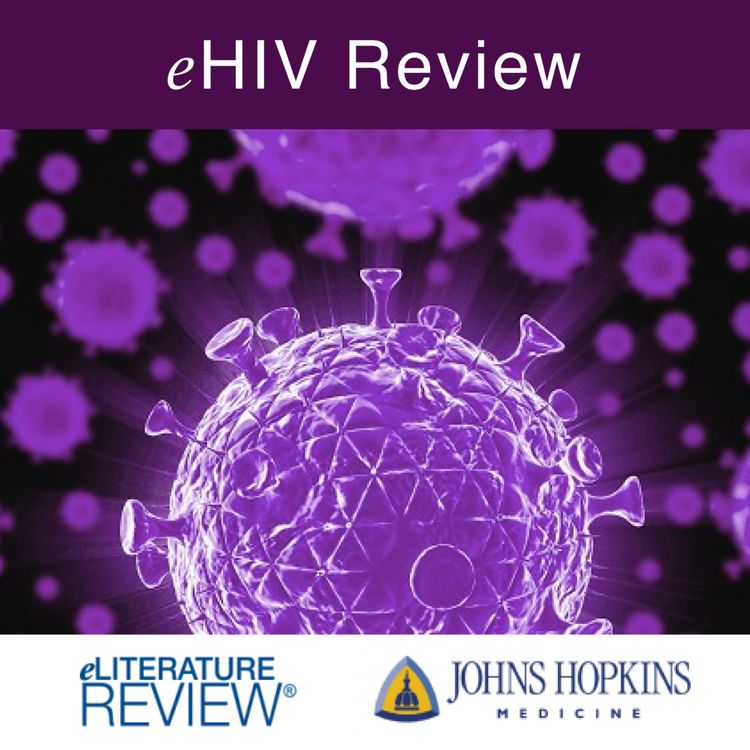Share

eHIV Review
Newer Options for Treatment-Experienced Patients Podcast
Season 7, Ep. 12
•
Treatment-experienced patients with RAMs — resistance-associated mutations — remain a difficult management challenge. Every case of HIV drug resistance requires a therapeutic regimen individualized for each patient’s ART history. How will new and in-development agents affect the equation?
Which drug combinations are right? Where does the balance between side effects and adherence lie?
These are some of the questions Dr. Brian Wood from the Division of Allergy and Infectious Diseases at the University of Washington in Seattle addresses in this eHIV Review podcast.
Take our post-test to claim CME credits.
To read a companion newsletter click here.
More episodes
View all episodes

12. New Directions in Long-Acting ART and Long-Acting PrEP
40:40||Season 9, Ep. 12How will the current research advancements in long-acting ART affect clinicians’ ability to provide better care for their patients with HIV? The recent data show that the low uptake and adherence to PrEP may be largely due to the pill burden and potential stigma of daily dosing. How might the newer longer-acting PrEP regimens challenge this reluctance?Post-test for CME credits: https://elit.dkbmed.com/issues/226/test
10. PLWH & SUD: A Clinical Perspective
31:26||Season 9, Ep. 10The primary health concern for all individuals living with HIV should be managing their disease, particularly maintaining adherence to their ART treatment. Yet for many, the more immediate demands of their substance use disorder — whether for stimulants and/or opioids — take precedence and can readily become the central focus of their lives. What signals can help a clinician recognize a substance use disorder? How can they differentiate a clinical SUD from intermittent (even though harmful) substance use? What evidence-based treatments should they consider?Post-test for CME credits: https://elit.dkbmed.com/issues/217/test
8. PLWH: Overcoming Post-Incarceration Care Disengagement
20:17||Season 9, Ep. 8People living with HIV who’ve had criminal legal involvement face significant challenges that complicate their ability to remain in the HIV care continuum. Many, while incarcerated, have stopped treatment, and once back in the community have been reluctant to resume ART. Why? What are the key drivers behind their disengagement from care? What can clinicians do to encourage these patients to return to treatment? What strategies have been tried, and what’s been shown to work? What does the evidence say?Post-test for CME credits: https://elit.dkbmed.com/issues/213/test
6. Managing HIV in an Aging Population
28:21||Season 9, Ep. 6Widespread use of highly effective ART has increased the life expectancy of people living with HIV (PLWH) to close to that of the general population. But despite highly effective viral suppression, the risks for cardiovascular diseases continue to increase in these individuals. So too do the risks of neurocognitive impairment.Post-test for CME credits: https://elit.dkbmed.com/issues/206/test
4. Managing HIV Coinfections: HBV and TB
33:45||Season 9, Ep. 4Current ART regimens can successfully manage HIV infection in nearly all PLWH. But what happens when a patient with HIV is coinfected with a dangerous pathogen ART alone cannot handle? Two of the most common are hepatitis B and latent tuberculosis infection.Post-test for CME credits: https://elit.dkbmed.com/issues/203/test
2. ART, HRT, Pregnancy, and Menopause in Women Living With HIV
24:45||Season 9, Ep. 2Pregnancy and menopause — for many women, these are two of the most significant healthcare events in their lives. For WLWH (women living with HIV) and their healthcare providers, managing these life-changing periods is often complicated by many questions.Post-test for CME credits: https://elit.dkbmed.com/issues/201
Clinical Approaches to Marginalized Populations
35:03|In part 1 of this eHIV Review Special Edition (still available at eHIVreview.org), eHIV Review Program Director Justin Alves, Nurse Educator at Boston Medical Center, reviewed the recent evidence describing some of the barriers to care experienced by marginalized individuals at risk for or living with HIV. In this Part 2 issue, he again calls upon two front-line clinicians in the fight to end the HIV epidemic in the U.S. — Nicky Mehtani, MD, from UCSF Medical Center in San Francisco, and Vanessa Loukas, NP, from Boston University’s Chobanian & Avedisian School of Medicine —to share their clinical approaches.Post test for CME/CE credit: https://elit.dkbmed.com/issues/191/test
Addressing the Needs of Marginalized Populations - Mehtani
04:43|Marginalized individuals at risk for or living with HIV — the formerly incarcerated, immigrants, people with unstable housing, residents of rural communities, the rising number with substance use disorder — have long faced disparities in obtaining adequate health care. What do HCPs need to know to understand the unique needs of these underserved populations? How can they provide meaningful, helpful, and culturally sensitive care? What barriers continue to prevent their being brought into the HIV care continuum?
Addressing the Needs of Marginalized Populations - Loukas
02:18|Marginalized individuals at risk for or living with HIV — the formerly incarcerated, immigrants, people with unstable housing, residents of rural communities, the rising number with substance use disorder — have long faced disparities in obtaining adequate health care. What do HCPs need to know to understand the unique needs of these underserved populations? How can they provide meaningful, helpful, and culturally sensitive care? What barriers continue to prevent their being brought into the HIV care continuum?